Radxa ROCK 4D is yet another Rockchip RK3576 SBC, but offered in a credit card form factor similar to the Raspberry Pi 3 model with the usual 40-pin GPIO header, Gigabit Ethernet ports, and four USB ports.
We first noticed it when we covered the Radxa Dual 2.5G Router HAT, and I’ve just seen it added to the Linux 6.15 release, so I thought it might be a good time to cover it, especially since it’s already for sale on Allnet and AliExpress starting at $31 plus shipping.
Radxa ROCK 4D specifications:
- SoC – Rockchip RK3576 or RK3576J (industrial-grade version)
- CPU – Octa-core CPU with 4x Cortex-A72 cores at 2.2 GHz, 4x Cortex-A53 cores at 2.0 GHz
- GPU – Arm Mali-G52 MC3 GPU with support for OpenGL ES 1.1, 2.0, and 3.2, OpenCL 2.0, and Vulkan 1.2
- NPU – 6 TOPS (INT8) AI accelerator with support for INT4, INT8, INT16, BF16, TF32 mixed operations.
- VPU
- Video Decoder
- H.265, VP9, AV1, and AVS2 up to 8Kp30 or 4Kp120
- H.264/AVC and MJPEG up to 4Kp60
- Video Encoder – H.264, H.265, MJPEG up to 4Kp60
- Video Decoder
- System Memory – 2GB, 4GB, 8GB, or 16GB LPDDR5
- Storage
- MicroSD card slot
- Connector for eMMC 5.1 flash module
- Connector UFS 2.0 flash module (note: only one eMMC or UFS module can be used at any time)
- M.2 M-Key 2280 socket for NVMe SSD (PCIe 2.1 x1)
- 16MB SPI flash
- Video Output
- HDMI 2.0 port up to 4Kp60 or 1080p120
- 4-lane MIPI DSI connector
- Audio
- 3.5mm headphone jack
- Digital audio via HDMI
- Camera
- 4-Lane MIPI CSI connector
- 2-Lane MIPI CSI connector
- Networking
- Gigabit Ethernet RJ45 port with optional PoE support
- WiFi 6 and Bluetooth 5.4 (FCU760K module) plus two u.FL antenna connectors
- USB
- 2x USB 3.0 Type-A ports (including one OTG port)
- 2x USB 2.0 Type-A host ports
- Expansion
- 40-pin Raspberry Pi-compatible GPIO header with up to 3x SPI, 5x UART, 6x I2C, 2x S/PDIF, 1x PCM/I2S, 7x PWMs, 1x ADC, 1x CAN Bus, 27x GPIO, 5V, 3.3V, and GND power signals.
- 16-pin Raspberry Pi PCIe FFC connector (PCIe Gen2 x1)
- Misc
- Power button
- Power and user LEDs
- 2-pin RTC battery connector
- PWM fan connector
- Power Supply
- 5V via USB-C port (10 to 25 Watts power adapter recommended)
- 5V via GPIO pins 2 and 4
- Dimensions – 87 x 58 x 20mm
- Weight – TBD
- Temperature Range
- RK3576 – 0°C to 70°C
- RK3576J – -40°C to 85°C
Radxa provides support for Debian Linux, Android 14, Yocto, and Buildroot. The NPU is supported by the Rockchip RKNN SDK for AI model deployment, like for other Rockchip SoCs with a built-in AI accelerator. The ROCK 4 family documentation has not been updated for the ROCK 4D, so none of the images are available for download right now. It’s probably just a matter of a few days or weeks.
We also mentioned that Radxa ROCK 4D was added to Linux 6.15, and at this time, it means UART, the SD Card, Ethernet, USB, and the RTC are working with mainline Linux, although only three USB ports are usable, and the top left is used for maskrom. Note that those limitations only apply to mainline Linux, and everything (or almost everything) should work on the vendor-provided images.
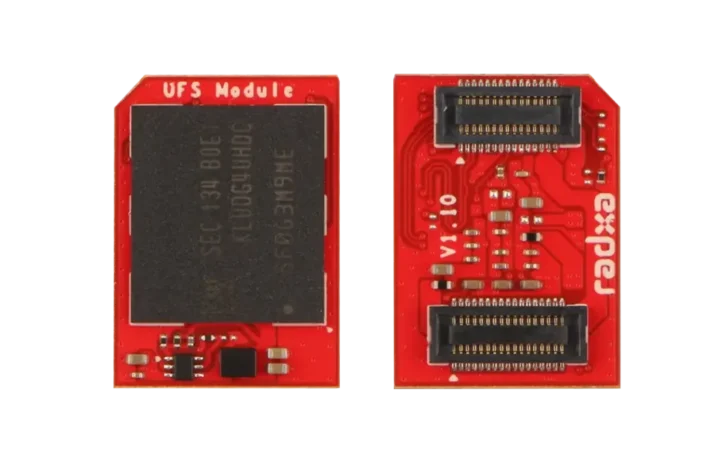
One advantage of the Rockchip RK3576 over the more powerful RK3588S is support for ultra-compact UFS storage that provides SSD performance at a fraction of the size. Most other Rockchip RK3576 hardware platforms we’ve covered only offer a footprint, although the NanoPi M5 has similar UFS connectors, but no UFS module for sale just yet. Radxa UFS modules looked to be available, but they are out of stock on AliExpress with 64GB to 256GB capacities and pricing ranging from $11.04 to $30.59.
Other Rockchip RK3576 SBCs include the Boardon SBC3576, the Firefly ROC-RK3576-PC, and the Banana Pi BPI-M5, among others, each with its own set of specifications and features. Unless I missed something, the Radxa ROCK 4D is the first RK3576 SBC to adopt a Raspberry Pi form factor. It can also be viewed as an upgrade to the Rockchip RK3399-powered Radxa ROCK 4C launched about 5 years ago.
Four models are available on AliExpress (there should be a non-affiliated AliExpress link here, if you don’t see it, check your ad blocker) with different RAM capacities: 2GB ($31.41), 4GB ($37.12), 8GB ($57.82), and 16GB ($99.80). Another advantage of the Rockchip RK3576(J) is its long-term availability with supply guaranteed for over ten years until September 2035. Getting accessories may require browsing several shops as Radxa sells its boards and accessories on Arace, AllNet, and AliExpress, and availability on each store varies a lot… Additional details may be found on the board’s product page.

Jean-Luc started CNX Software in 2010 as a part-time endeavor, before quitting his job as a software engineering manager, and starting to write daily news, and reviews full time later in 2011.
Support CNX Software! Donate via cryptocurrencies, become a Patron on Patreon, or purchase goods on Amazon or Aliexpress. We also use affiliate links in articles to earn commissions if you make a purchase after clicking on those links.

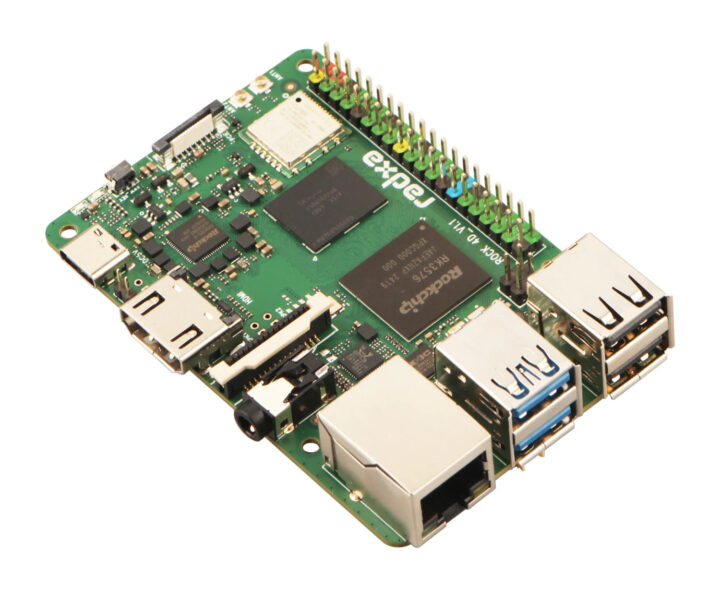
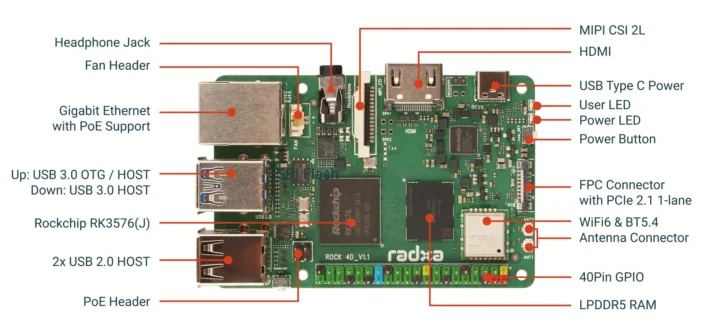
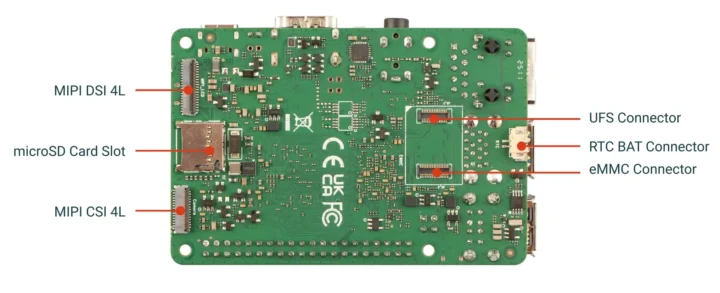
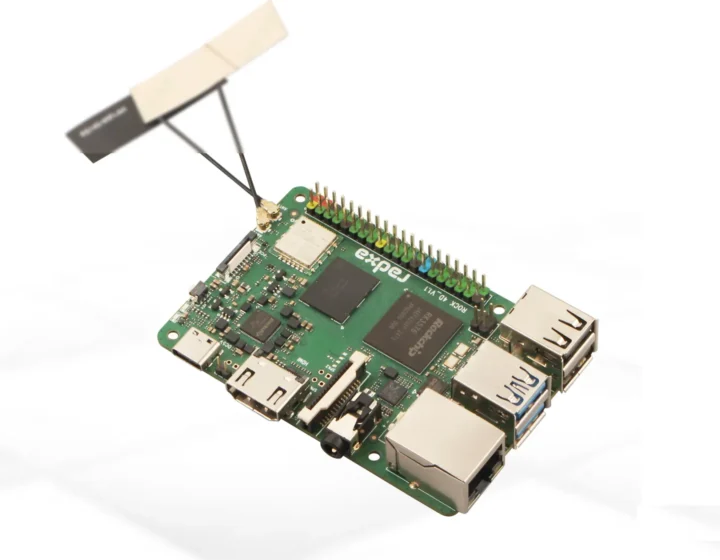
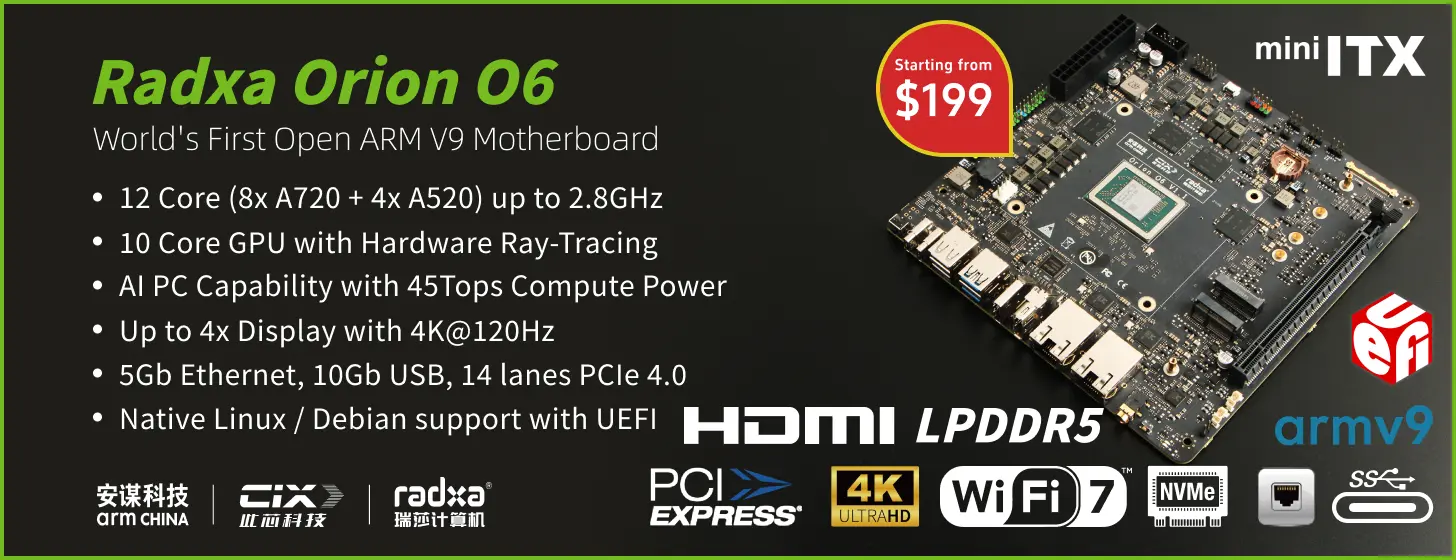


Well, for the price of a Raspberry Pi 3B+ here in France (+/- 50€), you can get a Rock 4D with 4G of RAM(40€ +12€ for shipping) and a bunch of IO.
If this pricing and specs are correct then new UFS option is about about 4x faster (350MB vs 1200MB) and 2x cheaper than eMMC modules ($64 vs $30). This makes it really nice option, comparable to some nvme options in sbcs.
I wouldn’t call it a replacement for previous boards due to the incompatible PCIe connector.
I have Rock-4SE and Rock-3A, both paired with an M. 2 board, and obviously, there is no compatible ribbon cable available to connect the old m.2 board to the new SBC.
The RK3576 seems to have been a stop gap effort from Rockchip to stem the dreadful impmentation of the RK3588, still a way of anything resembing complete.
By utilising a GPU that already has enough support from most kinds of distros and ensuring that the hardware will have most, if not all of thge necessary drivers already available, then it becomes a potentially half decent proposition, especially for the Android TV box and media streamer markets, where desktop use can also be an option for many a task.
UFS storage support is useful.
The Raspberry Pi PCIe FFC connector should allow a variety of HAT expansion options.
It would seem that it wants to vie with the Raspbery Pi 5.
With the wide range of RAM options, I could see the 2Gb model being ideal for Libreleec or similar.
If long term availablility of the SOC is true then it could have some legs but then this is Rockchip.
What they say could change overnight.
“dreadful impmentation of the RK3588, still a way of anything resembing complete”
but at least it is being worked on by Collabora, amongst others, and a lot of that work can be reused on the RK3576?
With that pricing and the 6-TOPS NPU, it might also be a viable choice to support a couple of streaming security cameras, using Frigate.